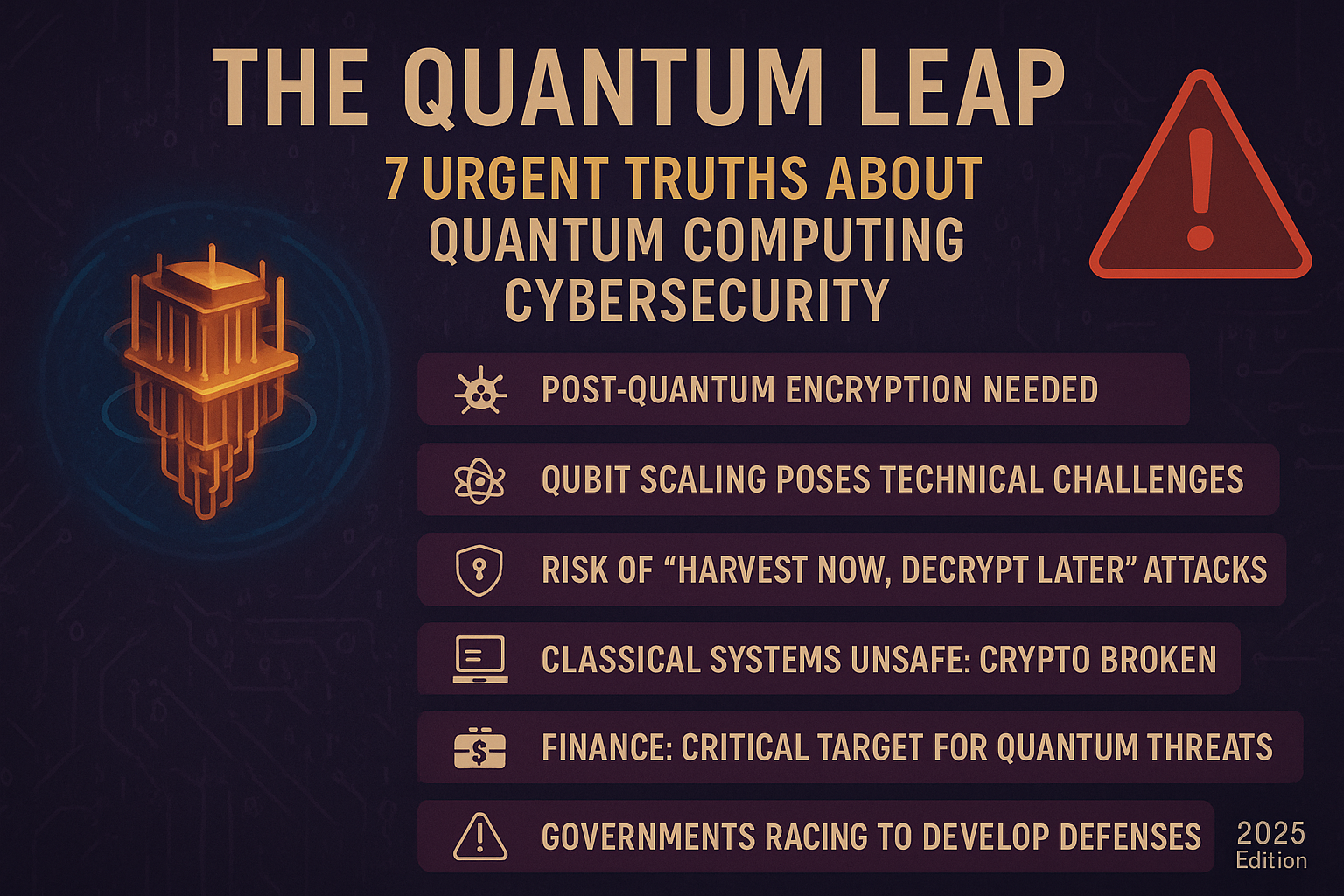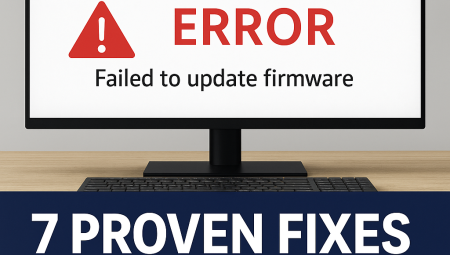The digital world we inhabit relies heavily on the bedrock of cryptography, protecting everything from our bank accounts to national security secrets. But a seismic shift is underway: quantum computing. While still in its nascent stages, the relentless progress in quantum technology poses an unprecedented threat to current cybersecurity paradigms. As we stand in July 2025, the question isn’t if quantum computers will break our strongest encryption, but when. Understanding Quantum Computing Cybersecurity isn’t just for academics anymore; it’s a critical imperative for businesses, governments, and anyone concerned with data integrity and privacy. This article will demystify the complex world of quantum threats and explore the cutting-edge solutions emerging to safeguard our digital future, offering the most comprehensive and up-to-date insights available.
What is Quantum Computing Cybersecurity and Why is it a Global Concern?
Quantum Computing Cybersecurity refers to the field dedicated to understanding, mitigating, and developing new methods to protect digital information against the threats posed by powerful quantum computers. These futuristic machines leverage the principles of quantum mechanics (superposition, entanglement) to perform calculations far beyond the capabilities of even the most powerful classical supercomputers.
The global concern stems from the fact that many of our foundational encryption standards, such as RSA (Rivest-Shamir-Adleman) and ECC (Elliptic Curve Cryptography), rely on mathematical problems that are computationally infeasible for classical computers to solve within a reasonable timeframe. However, quantum algorithms like Shor’s Algorithm can factor large numbers and solve discrete logarithm problems exponentially faster, effectively breaking these widely used encryption schemes. This means that sensitive data encrypted today could be easily decrypted by a sufficiently powerful quantum computer in the future, leading to widespread data breaches, compromised communications, and destabilized infrastructure. The urgency grows as quantum computers inch closer to “cryptographically relevant” sizes.
The Quantum Threat Landscape: How Quantum Computers Break Encryption
The primary fear surrounding quantum computing cybersecurity is its ability to undermine the very algorithms that secure our digital lives. Two quantum algorithms stand out as immediate threats:
Shor’s Algorithm: The Code Breaker
Developed by Peter Shor in 1994, this algorithm is the biggest menace to asymmetric encryption.
- Target: Widely used public-key cryptographic systems like RSA (used for secure web Browse, email, and digital signatures) and ECC (common in cryptocurrencies, secure messaging, and digital certificates).
- Mechanism: Shor’s algorithm efficiently factors large prime numbers and solves discrete logarithm problems, which are the mathematical foundations of RSA and ECC, respectively. A classical computer would take billions of years to factor a sufficiently large number; a quantum computer with Shor’s algorithm could do it in minutes or hours.
- Implication: If a quantum computer capable of running Shor’s algorithm effectively emerges, all data encrypted with these methods, even if captured today (“harvest now, decrypt later” attacks), would be vulnerable.
Grover’s Algorithm: Speeding Up Brute Force
While not a direct “code breaker” in the same vein as Shor’s, Grover’s algorithm poses a significant threat to symmetric encryption.
- Target: Symmetric-key algorithms like AES (Advanced Encryption Standard), commonly used for bulk data encryption.
- Mechanism: Grover’s algorithm can significantly speed up brute-force search attacks. For an AES-256 key (which currently requires operations to brute force), Grover’s algorithm would reduce the required operations to approximately .
- Implication: While not breaking AES entirely, it effectively halves the security level. This means a 256-bit AES key would offer the security of a 128-bit key against a quantum attacker, potentially making it vulnerable to brute-force attacks sooner than anticipated.
The Race for Resilience: Introducing Post-Quantum Cryptography (PQC)
The solution to the quantum threat lies in developing and deploying Post-Quantum Cryptography (PQC), also known as quantum-resistant or quantum-safe cryptography. These are new cryptographic algorithms designed to be secure against both classical and quantum computers.
What is Post-Quantum Cryptography?
Post-Quantum Cryptography (PQC) refers to a new generation of cryptographic algorithms specifically designed to withstand attacks from large-scale quantum computers. Unlike current encryption, which relies on mathematical problems intractable for classical computers, PQC algorithms are built upon different mathematical foundations that are believed to remain hard even for quantum computers. The goal is to replace or augment existing public-key algorithms with these quantum-resilient alternatives before cryptographically relevant quantum computers become a reality.
Key Families of PQC Algorithms Under Standardization
The U.S. National Institute of Standards and Technology (NIST) has been leading a multi-year standardization process for PQC algorithms, which is crucial for global adoption. As of mid-2025, NIST has identified several promising families of PQC algorithms:
- Lattice-Based Cryptography: These algorithms rely on the computational hardness of problems in high-dimensional lattices. Examples include CRYSTALS-Kyber (for key establishment) and CRYSTALS-Dilithium (for digital signatures). They are generally efficient and offer robust security.
- Hash-Based Cryptography: Based on the security of cryptographic hash functions. XMSS and SPHINCS+ are examples used for digital signatures. While relatively simple and well-understood, they often have larger key sizes or require stateful tracking.
- Code-Based Cryptography: Relies on the difficulty of decoding general linear codes. McEliece and Classic McEliece are examples. They offer high security but often come with very large public keys.
- Multivariate Polynomial Cryptography: Uses the difficulty of solving systems of multivariate polynomial equations over finite fields. Rainbow (though recently broken) and GeMSS were examples in this category. Research continues to find robust candidates.
- Isogeny-Based Cryptography: Based on the computational hardness of finding isogenies between elliptic curves. SIKE was a prominent candidate but was recently broken. Research continues in this area for new constructions.
The NIST standardization process is nearing its final stages, with initial standards expected to be published soon, paving the way for widespread implementation.
The Urgent Timeline: When Do We Need to Act?
The “crypto-agility” challenge, or the ability to rapidly switch out cryptographic algorithms, is immense. Deploying new cryptographic standards across global IT infrastructure will take years, possibly a decade or more.
- Now (2025): “Harvest Now, Decrypt Later” is a real threat. Adversaries are collecting encrypted data today, knowing they can decrypt it once sufficiently powerful quantum computers exist. Organizations need to start assessing their cryptographic inventory.
- Near Future (2025-2030): Expect initial PQC standards to be finalized and the first wave of implementation. Enterprises will begin pilot programs for quantum-safe transitions.
- Mid-Future (2030+): Cryptographically relevant quantum computers could emerge, posing a direct threat. Organizations not transitioned will be at severe risk.
“It’s like a cryptographic Y2K, but with a much less certain deadline,” noted a leading cybersecurity expert in a 2024 conference. Delays in adopting PQC now could lead to catastrophic security failures in the future.
Current Challenges in Adopting Quantum Computing Cybersecurity
While the need for PQC is clear, the transition isn’t straightforward. Several significant challenges hinder rapid adoption:
Complexity of Algorithms
PQC algorithms often have larger key sizes, slower performance, or require more computational resources than their classical counterparts. Integrating these into existing systems requires significant engineering effort and can impact performance.
Standardization and Interoperability
Although NIST is leading the way, global consensus and widespread adoption of specific PQC standards are still evolving. Ensuring interoperability across diverse systems and vendors is a major hurdle.
Crypto-Agility and Inventory Management
Many organizations don’t have a clear inventory of where and how cryptography is used within their systems. Identifying all cryptographic assets and then enabling them to switch between algorithms (“crypto-agility”) is a monumental task. A 2024 IBM report found that only 15% of organizations globally have a clear inventory of their cryptographic assets, highlighting a significant readiness gap.
Talent Gap
There’s a severe shortage of cybersecurity professionals with expertise in quantum computing and post-quantum cryptography. Training existing staff and attracting new talent are critical for successful transitions.
Pro Tips for Navigating the Quantum Cybersecurity Transition
The shift to a quantum-safe world requires proactive planning and action. Here are expert tips for organizations and individuals:
- Conduct a Cryptographic Inventory: Understand exactly where and how cryptography is used across your entire IT infrastructure, applications, and data. This is the foundational step.
- Start Monitoring PQC Standards: Keep a close eye on the NIST PQC standardization process and other relevant industry initiatives. Be prepared to adapt as standards are finalized.
- Develop a Quantum Readiness Roadmap: Create a strategic plan for transitioning to quantum-safe cryptography. This should include timelines, resource allocation, and a phased approach.
- Invest in Crypto-Agility: Design new systems and update existing ones to be “crypto-agile,” meaning they can easily switch out cryptographic algorithms without major architectural changes.
- Educate Your Workforce: Train your cybersecurity and IT teams on the fundamentals of quantum computing threats and post-quantum cryptography.
- Engage with Vendors: Ask your technology vendors about their quantum readiness plans and how their products will support PQC. Prioritize vendors committed to a quantum-safe future.
Frequently Asked Questions About Quantum Computing Cybersecurity
What is “Harvest Now, Decrypt Later”?
“Harvest Now, Decrypt Later” refers to the strategy of adversaries collecting large amounts of currently encrypted sensitive data (e.g., financial records, state secrets) with the intention of storing it. Once a sufficiently powerful quantum computer becomes available, they plan to use its computational power to decrypt this captured data, even if it was encrypted years ago. This highlights the immediate threat even before quantum computers are fully operational.
Will Quantum Computing replace all traditional cybersecurity methods?
No, quantum computing will not replace all traditional cybersecurity methods. While it poses a significant threat to current public-key cryptography (like RSA and ECC), many other aspects of cybersecurity, such as firewalls, intrusion detection systems, access controls, and traditional symmetric-key encryption (like AES, though with reduced security against Grover’s algorithm), will still be essential. The focus is on integrating new Post-Quantum Cryptography (PQC) algorithms into existing security architectures.
When will quantum computers be powerful enough to break current encryption?
While exact timelines vary, most experts predict that cryptographically relevant quantum computers (those powerful enough to break current encryption) could emerge within the next 5-15 years. Some optimistic projections suggest it could be as early as 2030 for certain algorithms, while others extend to 2040 or beyond. The “quantum safe transition” period is critical now because it takes many years to implement new cryptographic standards across global infrastructure.
Are there any companies or countries leading the race in Quantum Computing Cybersecurity?
Yes, several entities are leading the charge. The U.S. National Institute of Standards and Technology (NIST) is globally recognized for its standardization efforts in Post-Quantum Cryptography (PQC). Major tech companies like IBM, Google, Microsoft, and Amazon are heavily invested in quantum computing research and developing quantum-safe solutions. Additionally, nations like China are making significant investments in quantum technologies, including their cybersecurity implications.
How does blockchain technology fit into Quantum Computing Cybersecurity?
Blockchain technology, which relies heavily on cryptographic hashes and digital signatures (often ECC), is also vulnerable to quantum attacks. Shor’s algorithm could compromise the digital signatures used to authorize transactions, and Grover’s algorithm could potentially speed up brute-force attacks on hash functions. Developers are actively exploring quantum-resistant blockchain designs that integrate PQC algorithms to ensure the long-term security and integrity of decentralized ledgers.



